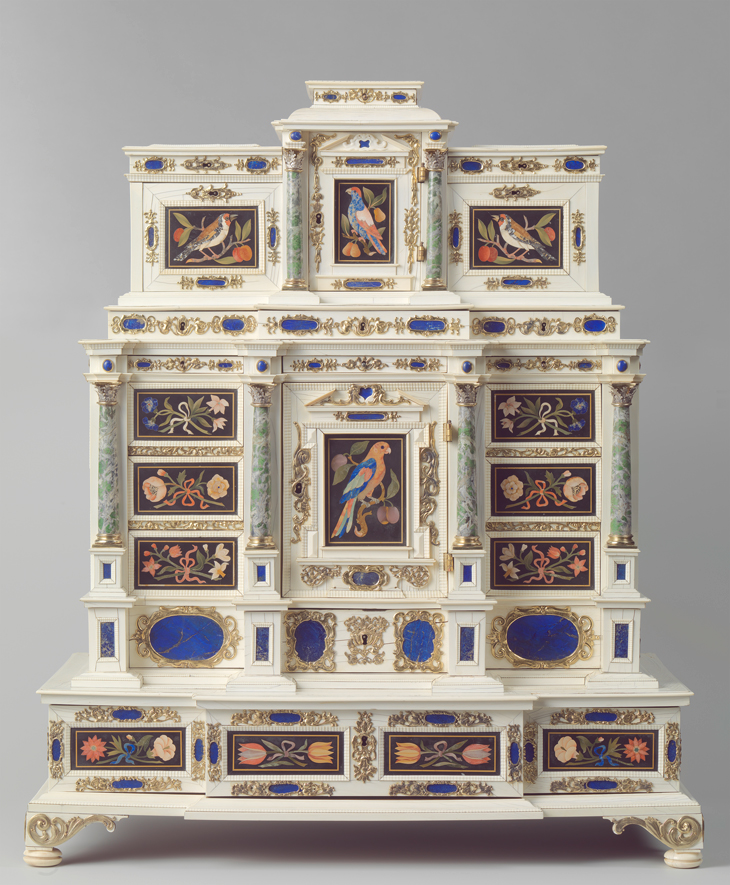The kwab style is the most important Dutch contribution to the development of decorative art in Europe. Fantastic sea creatures, monstrous beasts, whimsical body shapes and fluid contours that seem to drip like syrup from a spoon: all are manifestations of the ornament style known as kwab, or ‘auricular’ or ‘lobate’ in English, referring to the organic forms of the ear. In the 17th century their fluid forms were to be found on luxury items such as ewers, dishes, furniture, wall-hangings and frames in the most stylish interiors of the elite.
This exhibition presents a selection of works by silversmiths including Paulus and Adam van Vianen and Johannes Lutma, alongside paintings by Rembrandt and Metsu, prints and drawings, tables, cabinets, gilt-leather wall hangings and brass church decorations. Find out more about the ‘Kwab’ exhibition from the Rijksmuseum’s website.

Ewer with lit (1614), Adam van Vianen. Courtesy Rijksmuseum

Ewer with lit (1614), Adam van Vianen. Courtesy Rijksmuseum

Cabinet (c. 1660–1670), anonymous. Courtesy Rijksmuseum

The Holy Family (1646), Rembrandt van Rijn. Courtesy Rijksmuseum

Pandora,-Barend-Graat,-1676-Rijksmuseum-2 (1676), Barend Graat. Courtesy Rijksmuseum











![Masterpiece [Re]discovery 2022. Photo: Ben Fisher Photography, courtesy of Masterpiece London](http://www.apollo-magazine.com/wp-content/uploads/2022/07/MPL2022_4263.jpg)
Why are fathers so absent from art history?